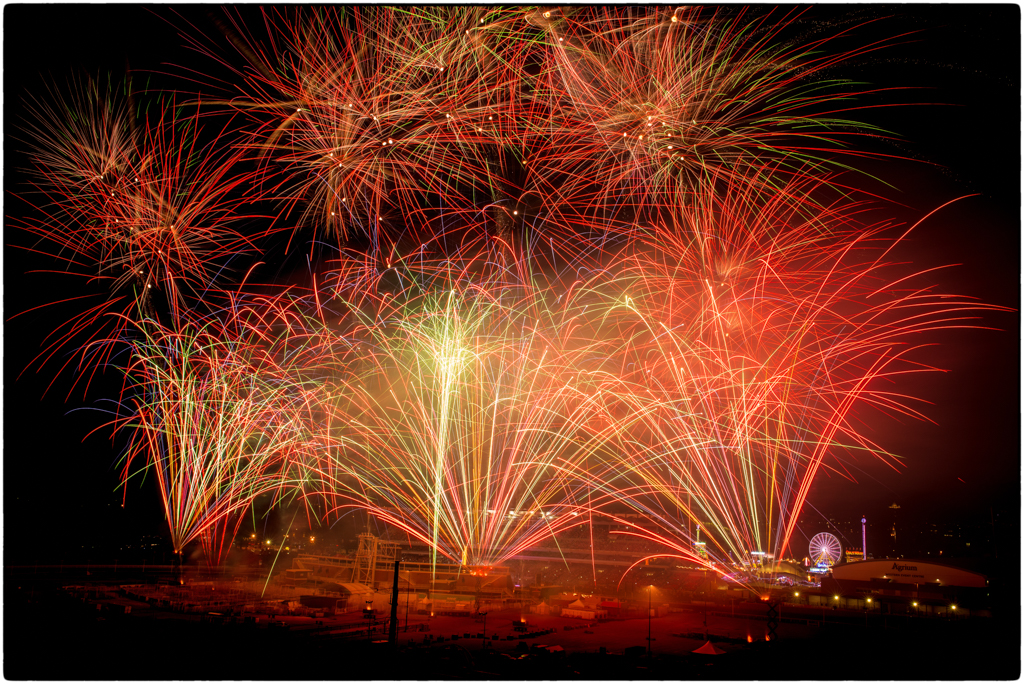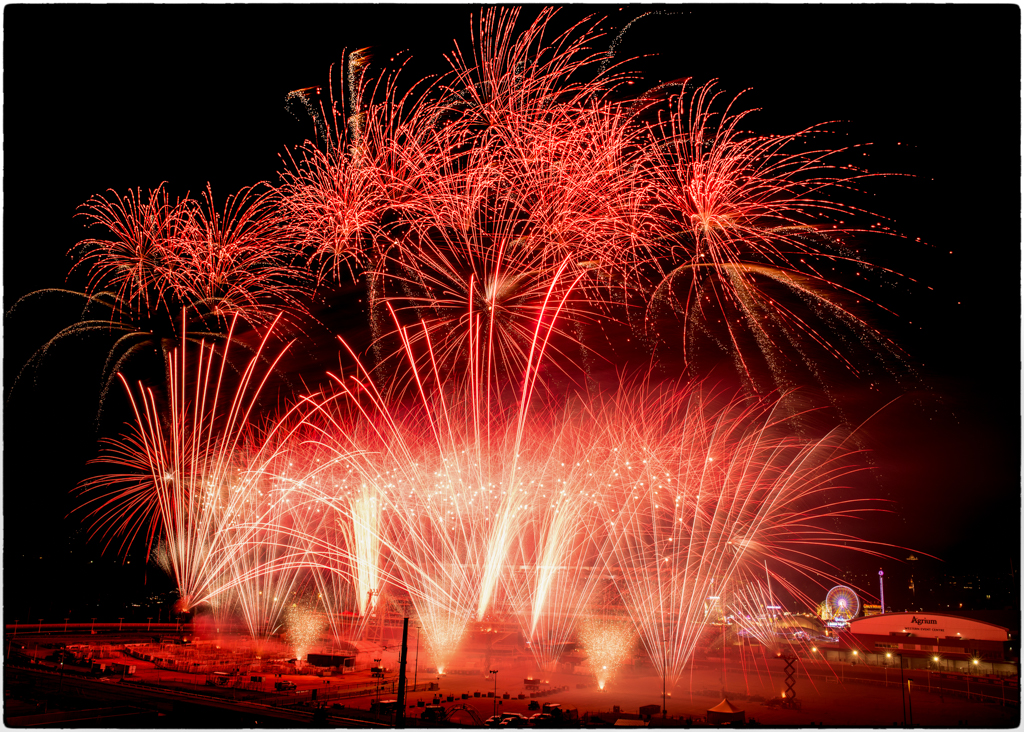I chose Fireworks for the challenge topic this week. Fireworks can be challenging to photograph, and I wanted to practice with the Canada Day and Calgary Stampede Fireworks this summer.
Here are some of my favourites:
Tips From This Week’s Photo Shoot:
Gear
A tripod, tripod release/remote and a camera that allows you to control the shutter speed are all essential for taking good pictures of fireworks. For more information on these, check out my last post under the section on gear.
Another item that can be quite useful is a neutral density filter. A neutral density filter is a piece of dark glass that you attach to the front of your lens to reduce some of the light entering the camera. This allows you to have a longer shutter speed without over exposing the shot. You do not necessarily need one of these for taking pictures of fireworks, but it can allow you to get longer trails of light on the fireworks and multiple firework bursts per shot.
Extra batteries are also a good idea. Long exposures can eat up your battery quickly. You may also want to turn off the automatic preview of photos so that you are minimizing the use of the camera’s LCD screen (it also uses up batteries). You will still want to check a few shots though to make sure that the exposure and focus are adequate.
It’s also a good idea to bring a camping chair, snacks & good company! Many good locations for taking pictures of fireworks require that you get there a few hours early to get a parking spot, find a good view of the fireworks and secure a spot with an optimal foreground. Thanks to James for keeping me company on all three fireworks shoots 🙂
Camera Settings
The camera settings will vary a bit depending on the fireworks. Some of the factors you will need to consider include:
- The brightness of the fireworks: Grand finales of fireworks are often brighter, so you may need to change your settings at towards the end of the fireworks session (e.g. decrease the aperture to f/16 or f/22). Also, some fireworks sessions are more intense than others (have more fireworks bursts at a time).
- The rest of your scene: Last year I took photos at the Stampede with several midway rides in the foreground. These ended up becoming overexposed in some areas when I was using a really long shutter speed. So I also had to consider exposing for the lights on the rides rather than the fireworks. Photographing the fireworks against the cityscape was similar – I also had to expose for the lights of the city to ensure that these were not too bright.
Aperture
It’s generally recommended to use an aperture of f/9 or smaller. This will reduce the light entering the camera and allow you to have a longer shutter speed. It will also help ensure the fireworks and foreground are in focus.
ISO
I usually choose a low ISO (e.g. ISO 100) in order to reduce noise in the photo. Many cameras could go higher without creating too much noise, but I find ISO 100 works well for me. It also allows for a longer shutter speed.
Shutter Speed
A longer shutter speed will enable you to get longer light trails on the fireworks. Depending on the length of time you choose for your shutter speed, you might even be able to get multiple fireworks bursts in the same photograph. I have used shutter speeds of 5-27 seconds in the photos above.
There is also an option on many DSLRs called “bulb” mode. It allows you to take a photograph for as long as you would like, rather than being restricted to 30 seconds. You usually need to scroll past all of the other shutter speed settings (mine goes up to 30 seconds) and then you would find the bulb mode. You hit the shutter button once (it opens the shutter), then time your shot (I use a timer on my iPhone so that I don’t lose track of the time) and then hit the shutter button again to finish the shot (that closes the shutter). This allows you to capture many fireworks bursts in a single photograph.
White Balance
Which white balance you choose depends on what colour temperature you would like your scene. Check out the two photos below. One has a daylight white balance, while the other has tungsten white balance. Note: if you shoot in RAW, you can always change the white balance after the fact.
Composition
Composition is a very important part of firework photographs, and I think it is probably the toughest part. An interesting foreground and composition can really improve a firework photograph. But it can be tough to find the right spot, especially if you are not familiar with the event or area. If you have the time, it would be a good idea to scope out the location before the shoot to find an optimal foreground.
You do not want to be too close the fireworks. Once I was so close the ash and pieces of the fireworks were falling into my hair and on my clothes! The fireworks ended up being too high overhead for me to get pictures (my tripod mount doesn’t allow for shots directly overhead) and there would have been no foreground in the shot.
Think about what you would like in the rest of the scene. For this year’s Canada Day shots I wanted a cityscape with the downtown skyscrapers in the photograph. So I chose a vantage point that allowed for this. I wasn’t very close to the fireworks, but it allowed me to get the cityscape that I was looking for.
I struggled a bit with finding a good foreground for the shots on the Calgary Stampede grounds. I ended up going for a 2nd try at a location outside of the Stampede Grounds. Scottsman Hill has a lovely vantage point of the fireworks, and we even saw chuck wagon racing before the fireworks!
Happy shooting!











leave a comment